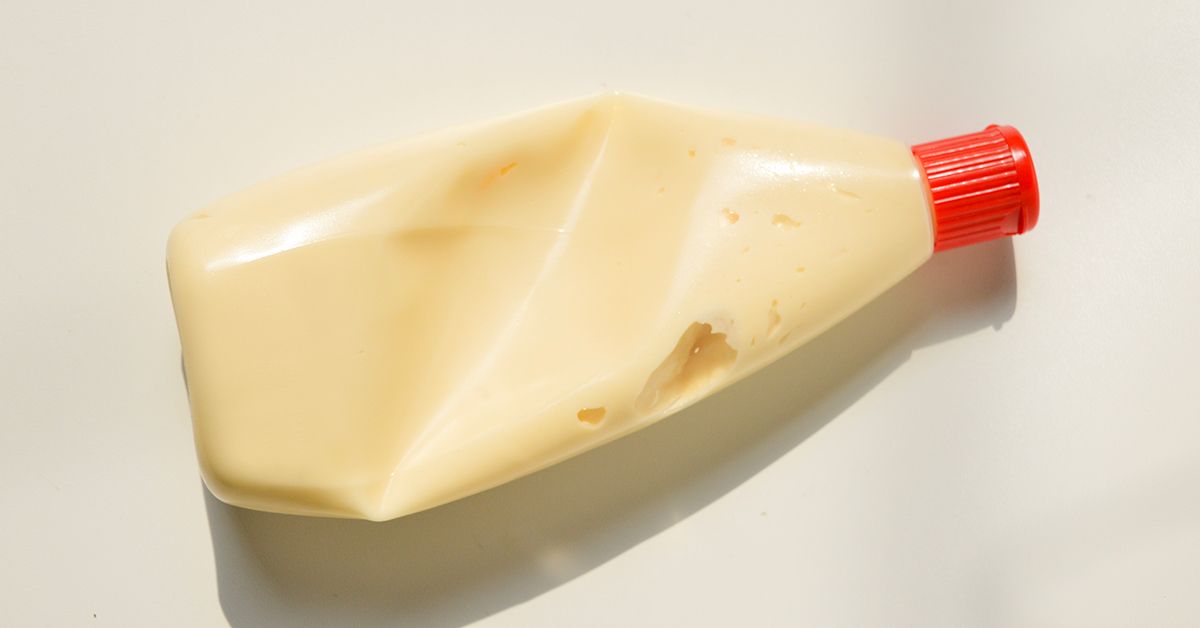Why It Is Necessary to Incorporate an Emulsifier in Food for Optimum Taste and Top Quality
Emulsifiers play a crucial function in food manufacturing by making certain the steady mixing of immiscible liquids, such as oil and water. They decrease interfacial stress, which stops the separation of components and contributes to an uniform structure. This not only improves mouthfeel however additionally affects taste understanding. Recognizing the requirement of emulsifiers exposes deeper insights right into their feature and relevance in culinary applications. What effects does this have for food advancement and customer choices?
Understanding Emulsifiers: The Basics
Emulsifiers play a crucial role in food science, acting as agents that assist in the blending of two immiscible liquids, such as oil and water. These compounds possess both hydrophilic (water-attracting) and hydrophobic (water-repelling) residential properties, which allow them to maintain emulsions. Typical emulsifiers consist of lecithin, located in egg yolks and soybeans, and mono- and diglycerides, obtained from fats.
The Science Behind Emulsification
When 2 immiscible fluids are incorporated, the procedure of emulsification ends up being basic for attaining a steady combination. Emulsification involves spreading one fluid within another, normally oil in water or the other way around. This procedure happens through mechanical frustration, which damages the larger droplets right into smaller sized ones, thereby enhancing the surface location. Without the presence of emulsifiers, these droplets would certainly coalesce, leading to splitting up.
Emulsifiers are molecules with hydrophilic (water-attracting) and hydrophobic (water-repelling) homes. Their distinct structure enables them to reduce the interfacial tension between both immiscible liquids, maintaining the solution. This stabilization stops splitting up and boosts the uniformity of texture and taste. The interactions at the molecular degree are necessary for maintaining the integrity of the emulsion, ensuring that foodstuff keep their desired uniformity and taste. Comprehending this scientific research is substantial for food researchers and manufacturers in developing high-grade food items.
Sorts Of Emulsifiers Made Use Of in Food
The types of emulsifiers utilized in food can be broadly categorized right into artificial and natural selections. Usual food emulsifiers, such as lecithin and mono- and diglycerides, play a vital role in improving food security and appearance. Understanding these distinctions is vital for valuing how emulsifiers add to the total top quality of foodstuff.
Natural vs. Artificial Emulsifiers
While both all-natural and synthetic emulsifiers serve the important duty of stabilizing mixes in food, their qualities and beginnings vary significantly. Natural emulsifiers, obtained from plant or pet resources, consist of lecithin, casein, and particular gum tissues. They are commonly viewed as much healthier options, attracting consumers looking for clean-label products. On the other hand, artificial emulsifiers, such as mono- and diglycerides, are chemically crafted and may offer boosted stability and capability in a bigger array of applications. These synthetic choices can be much more cost-effective and provide consistent quality. They might evoke hesitation amongst health-conscious consumers. Inevitably, the option between all-natural and synthetic emulsifiers depends on the desired top qualities of the food item, consisting of structure, taste, and shelf-life security.
Common Food Emulsifiers
Emulsifiers play a vital duty in the food industry, making sure the stability and appearance of different items. Typical food emulsifiers consist of lecithin, mono- and diglycerides, and polysorbates. Emulsifier In Food. Lecithin, originated from sources like soybeans and egg yolks, is extensively made use of in baked items and delicious chocolates. Mono- and diglycerides, often gotten from vegetable oils, improve the creaminess of margarine and gelato. Polysorbates, synthetic emulsifiers, are regularly located in salad dressings and sauces, promoting a smooth consistency. Various other emulsifiers such as xanthan periodontal and guar gum, both all-natural thickeners, additionally add to the wanted texture in different food products. Each emulsifier type serves specific purposes, adding to the overall high quality and allure of food products

Function in Food Stability
Food security is considerably influenced by the kinds of emulsifiers utilized, which assist avoid the splitting up of active ingredients in different formulations. Emulsifiers such as lecithin, mono- and diglycerides, and polysorbates play necessary duties in keeping the uniformity of products like dressings, sauces, and ice lotions. Lecithin, originated from soy or egg yolk, is specifically reliable because of its natural buildings, while mono- and diglycerides boost structure and life span. Polysorbates, on the various other hand, enhance the stability of oil-in-water solutions, making them optimal for baked items. The option of emulsifier depends upon the specific food application and desired attributes, making sure that products continue to be steady, appealing, and of excellent quality throughout their designated rack life.
Exactly How Emulsifiers Improve Structure and Mouthfeel
Enhancing the sensory experience of food, emulsifiers play an essential role in enhancing appearance and mouthfeel. These compounds promote the consistent circulation of components, enabling a smoother and creamier uniformity in items such as dressings, sauces, and ice creams. By stabilizing blends of oil and water, emulsifiers stop splitting up, leading to a natural structure that improves the general consuming experience.
Additionally, emulsifiers can modify the viscosity of food, adding to a preferable thickness or creaminess. This change of structure can affect exactly how food really feels in the mouth, impacting complete satisfaction and pleasure. In addition, by producing a steady emulsion, emulsifiers aid keep the integrity of the product, guaranteeing that the intended mouthfeel is consistently provided with time. Generally, the application of emulsifiers is vital for attaining the appropriate structure and mouthfeel, inevitably elevating the high quality of food products.
The Function of Emulsifiers in Taste Enhancement
Taste improvement in cooking applications commonly rests on the efficient use of emulsifiers. These compounds help with the blending of water and oil, permitting the even distribution of flavor substances within foodstuff. By creating steady solutions, emulsifiers assist to encapsulate and launch volatile flavors, enhancing the overall sensory experience.
In enhancement, emulsifiers can improve the understanding of taste by influencing the mouthfeel and texture of recipes. A smoother, much more natural item can lead to an increased understanding of flavors, making them much more satisfying and noticable. Emulsifiers can shield delicate tastes from degradation, guaranteeing that they continue to be undamaged throughout handling and storage space.
Emulsifiers in Popular Food Products
How do emulsifiers add to the texture and stability of prominent food? Emulsifiers play an important role in various extensively eaten items. In salad dressings, they guarantee a smooth blend of oil and vinegar, protecting against separation and improving mouthfeel. In ice lotion, emulsifiers produce a velvety structure by supporting air bubbles, leading to an indulgent and rich item. Baked goods, such as bread and cakes, benefit from emulsifiers by improving quantity and crumb structure, bring about a lighter and extra enticing appearance. Additionally, mayo relies upon emulsifiers to maintain its thick consistency and protect against oil separation. Margarine and spreads additionally utilize emulsifiers to achieve a spreadable appearance while keeping stability. These examples illustrate the considerable impact of you could try this out emulsifiers on the top quality and enjoyment of everyday food, emphasizing their value in modern-day food formulation.
The Future of Emulsifiers in Food Innovation
The future of emulsifiers in food development is marked by significant improvements in modern technology, leading the way for brand-new solutions. In addition, the need for healthier emulsifier choices is increasing, triggering researchers to explore plant-based and natural options. Lasting sourcing methods are likewise coming to be crucial, as consumers increasingly prioritize environmental responsibility in their food choices.
Advancements in Emulsifier Innovation
As researchers continue to explore the molecular intricacies of emulsifiers, considerable developments are emerging that pledge to change food advancement. Recent developments focus on creating much more functional and reliable emulsifiers that boost structure, stability, and flavor in various food products. Innovations in biopolymer-based emulsifiers are getting traction, providing enhanced sustainability and efficiency over typical options. Furthermore, developments in nanotechnology are allowing the style of emulsifiers at the molecular level, which can result in finer emulsions and boosted sensory experiences. These technological developments are not just enhancing product high quality yet likewise expanding the range of applications for emulsifiers i thought about this in the food sector. As these developments unravel, they are expected to redefine culinary opportunities and customer choices in the future.
Healthier Emulsifier Alternatives
While typical emulsifiers have actually played a necessary role in food manufacturing, there is a growing demand for healthier choices that line up with consumer preferences for clean tags and natural active ingredients. Technologies in plant-based emulsifiers, such as those stemmed from soy, sunflower, and flaxseed, have gotten popularity because of their regarded health advantages. These choices typically have fewer additives and supply functionality comparable to synthetic emulsifiers. Additionally, ingredients like aquafaba, the fluid from cooked chickpeas, have actually arised as versatile emulsifying agents, attracting vegan and health-conscious consumers. Emulsifier In Food. The change in the direction of these much healthier emulsifiers not just enhances the appeal of food products however likewise supports the pattern of openness in active ingredient sourcing, ultimately promoting customer count on and contentment

Lasting Sourcing Practices
Lasting sourcing practices are coming to be progressively crucial in the development of emulsifiers, reflecting a broader dedication to environmental obligation within the food industry. Suppliers are currently focusing on using renewable energies, such as plant-based active ingredients, which decreases the carbon footprint related to typical emulsifiers. This shift not just sustains biodiversity but also advertises moral farming methods that profit regional neighborhoods. Additionally, improvements in technology enable the extraction and processing of emulsifiers with reduced environmental impact. By embracing lasting sourcing, companies enhance their brand name photo while satisfying customer need for openness and eco-friendliness. As the food sector proceeds to advance, the combination of sustainable emulsifiers will certainly play an essential duty fit future developments, making sure a balance in between high quality and environmental stewardship.
Often Asked Inquiries
Are Emulsifiers Safe for People With Food Allergies?

Can Emulsifiers Impact the Nutritional Worth of Food?
Emulsifiers can influence the nutritional worth of food by enhancing vitamins and mineral view it now absorption or possibly changing the bioavailability of certain substances. Nonetheless, their effects differ extensively depending upon the kind of emulsifier and the total food solution.
Exactly How Do Emulsifiers Influence Life Span of Products?
Emulsifiers improve the life span of items by maintaining combinations, avoiding splitting up, and lowering putridity. This stability helps preserve structure and flavor gradually, eventually guaranteeing food remains risk-free and attractive for longer periods.
What Are Typical All-natural Emulsifiers Located in Home Kitchens?
Common natural emulsifiers discovered in home kitchen areas consist of egg yolks, honey, mustard, and soy lecithin. These ingredients assist maintain blends by lowering surface stress in between oil and water, boosting texture and consistency in numerous recipes.
Exist Any Worry About Artificial Emulsifiers in Food?
Problems concerning artificial emulsifiers in food consist of potential digestive concerns, inflammatory feedbacks, and links to excessive weight. Some researches recommend these ingredients may interrupt gut microbiota, increasing questions concerning their lasting effects on health and wellness and wellness.
Typical food emulsifiers, such as lecithin and mono- and diglycerides, play an important role in boosting food security and appearance. Emulsifiers play an important function in the food industry, ensuring the stability and texture of various items - Emulsifier In Food. Other emulsifiers such as xanthan gum tissue and guar periodontal, both natural thickeners, also contribute to the wanted structure in various food products. Current growths concentrate on creating more flexible and efficient emulsifiers that improve structure, security, and flavor in various food items. Emulsifiers can present dangers for individuals with food allergies, as some emulsifiers are acquired from irritants like soy or eggs